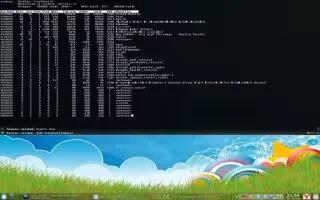If you are having problems with cursor not being rendered on display when using popular derivatives of Debian Linux with a legacy Nvidia video card; you can solve the problem. Follow the simple steps below.
The mouse cursor device is the primary indication of the position of the Human Machine Interface (HMI) device such as a Mouse or Graphics Tablet; via which users of many modern computer systems use to interact with the graphical user interface of their chosen operating system. If the user’s chosen operating system is, indeed, a variant of Debian that uses the Nouveau hardware driver (such as those listed above), the user may experience troubles with the aforementioned cursor not displaying. This article shall guide you through the steps to fix this issue.
Switch away from your x-windows session (the Graphical User Interface (GUI); mostly a GNU or KDE environment) to a text console. Please do note, that it isn’t enough to simply bring up a text console in your GNU or KDE x-windows session – you must have a true console without the various x modules loaded as these have dependencies on which we shall be removing. To get to your text console, you need to press the following key-combination:
Ctrl + Alt + F1
Stop the X-Server which performs the rendering of Graphical User Interface (GUI) objects. It is required to do this due to the previously mentioned dependencies. There are two variations to this task which shall depend on the desktop environment that which you have chosen to run. In the console window opened in step number 1, execute the following command (noting that you will be prompted for your login-password to confirm that the command to be executed shall be run as the root user):
sudo apt-get –purge remove xserver-xorg-video-nouveau
Now that the video card hardware driver that causes the issue has been removed, the operating system shall now revert to using the generic hardware driver for your Nvidia video card once you reboot the machine. Do the reboot of your computer by executing the following command (noting that you may, depending on your password time-out settings) be prompted for your login-password to confirm that the command to be executed shall be run as the root user):
sudo shutdown -r now
Note
- Another option that is available to you is to perform the installation of a new video card that does not have the issue.
- If your computer is a laptop, netbook or lightbook, the article how to upgrade a laptop will also be of use to you.
- Ensure that you have a video card that is manufactured by the Nvidia corporation prior to performing these steps. Otherwise, you shall be greeted by an error at step number two.
- The article how to find out what graphics card you have shall not be of help here to help identify if you have a Nvidia video card that may be causing your error, as it was written for the Windows operating system.
- Always be especially careful when executing commands pre-pended by the sudo command, as this means that the command following shall be executed as the root user and all safeties are revoked. Much harm can be done to your computer with the sudo command if you are not careful. Always double-check what you have typed just to be on the safe side and avoid trouble.
